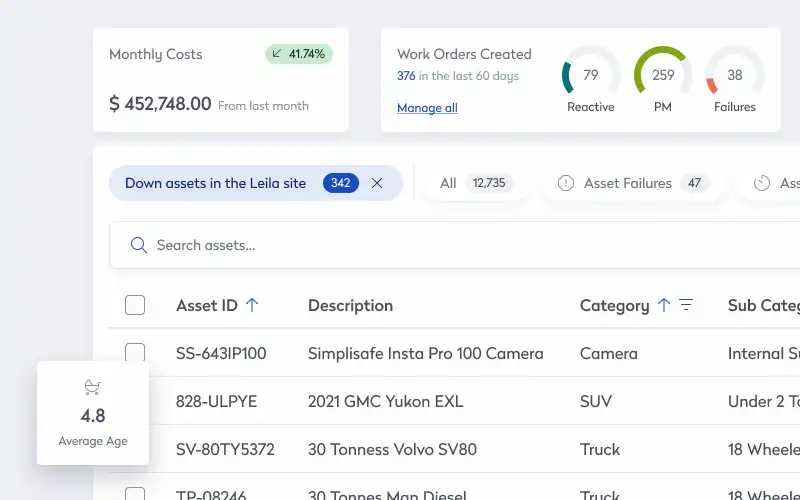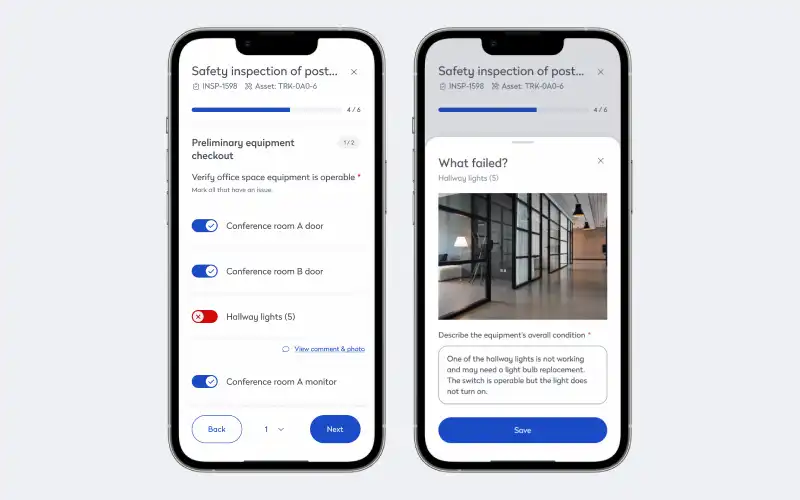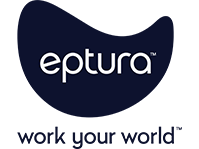
Organizations invest in facility and maintenance management software to solve operational challenges, including response times, downtime, and compliance. It makes sense that selection teams focus on features that directly address those problems. But usability deserves just as much attention.
Key takeaways
- User-friendly design enhances operational efficiency and productivity: By providing quick access to critical information, clear visibility into operations, and intuitive interfaces, user-friendly software helps teams respond faster, make fewer mistakes, and stay on top of tasks
- It improves data quality and decision-making: Clear forms, real-time validation, and consistent usage reduce the risk of data entry errors, leading to more reliable reporting and better-informed decisions
- User-friendly design increases ROI: By fostering faster adoption, reducing training time, and ensuring consistent use, user-friendly software maximizes its value over time, leading to stronger, longer-term returns on investment through improved efficiency, better data quality, and enhanced operational alignment
User-friendly design helps people get things done faster and with fewer errors. It supports adoption, improves data quality, and makes the system more valuable over time for a stronger, longer return on investment.
What is user-friendly design for software?
User-friendly software is applications that are easy to use, intuitive, and accessible to a wide range of users. User-friendly design minimizes the learning curve and error rate while maximizing efficiency, allowing users to successfully accomplish tasks without frustration or confusion.
In the early days of computing, software companies designed their products primarily for experts. Users interacted with machines through command-line interfaces, which required memorizing specific syntax and commands. Software was often powerful but inaccessible to most people.
The introduction of graphical user interfaces in the 1980s and 1990s changed everything. Instead of typing commands, users could click icons, drag windows, and navigate menus.
What does user-friendly design matter for facility and workplace management software?
For large organizations managing complex facilities, equipment, and teams, the usability of software directly impacts operational efficiency, employee productivity, and cross-functional collaboration.
In fact, poorly designed systems introduce operational inefficiencies, including:
- Wasted time searching for critical information: Staff often spend valuable time navigating cluttered interfaces or poorly labeled sections to locate basic data. These delays slow down response times and reduce overall productivity
- Limited visibility into the big picture: Without unified dashboards or clear data relationships, it’s hard to see how tasks, assets, and teams connect. Decision-makers may miss trends or inefficiencies that impact long-term planning
- Higher risk of data entry errors: Unclear forms and lack of validation make it easy to enter incorrect or duplicate information. These mistakes can affect reporting accuracy and lead to operational disruptions
- Longer training and onboarding periods: Interfaces that are inconsistent or overly complex require more time to learn. Extended onboarding slows adoption and increases support needs across teams
- Reduced confidence in the system: Users who find the software difficult to navigate may rely on manual workarounds. These habits create gaps in communication and undermine the platform’s effectiveness
These issues don’t just slow down individual tasks. They compound across teams, sites, and systems, creating friction that undermines productivity and performance.
What are the benefits of user-friendly design for FM teams?
User-friendly design isn’t just about how software looks. It’s about how well it works for the people using it.
When software is easy to use, teams can get more done in less time, make fewer mistakes, and spend less effort on training. That leads to faster response times, better use of resources, and fewer disruptions.
It also encourages consistent use. If a platform is confusing or hard to navigate, people may avoid it or miss out on important features. But when the interface is clear and responsive, users are more likely to engage with it fully. That means better data, stronger reporting, and more informed decisions.
All of these improvements help increase ROI. It’s simple: When software works better, so does the business.
Quick access to critical Information improves responsiveness
Facility and maintenance teams often operate under tight timelines, especially when responding to urgent issues like equipment failures, safety hazards, or compliance audits. When software is designed for fast, intuitive access to key data like asset histories, open work orders, or inspection records teams can act quickly and confidently.

For example, a technician working across multiple campuses can use a mobile interface to instantly pull up the maintenance history of a generator, rather than waiting on a supervisor or digging through outdated spreadsheets.
In multi-site operations, this kind of visibility helps standardize processes and ensures that critical information is never siloed or lost between locations.
Clear visibility enables proactive facility management
Facility managers need to see how assets, tasks, and teams connect across multiple sites to make informed decisions. Software with well-designed dashboards, asset maps, and timeline views helps managers identify recurring issues, plan preventive maintenance, and allocate resources strategically. For instance, if HVAC systems across several buildings show increased service frequency, managers can investigate root causes and adjust schedules before failures occur.
Proactive planning becomes easier when the software presents data in a digestible format. Instead of reacting to breakdowns, teams can use trend analysis and performance metrics to anticipate needs. This leads to fewer emergency repairs, better budget forecasting, and improved uptime. In large organizations, where even small inefficiencies can scale into major costs, having a clear view of operations is essential for long-term success.
Intuitive interfaces reduce errors and improve data quality
Mistakes in data entry can lead to incorrect maintenance actions, compliance issues, or budget misalignment. Software that uses clear labels, smart defaults, and real-time validation helps reduce these risks. For example, a technician entering a work order for a boiler repair might be prompted to select from a predefined list of parts, reducing the chance of typos or incompatible selections.
Cleaner data leads to more reliable reporting and better decision-making. When users trust the system to capture and reflect accurate information, they’re more likely to use it consistently. In large organizations, where multiple teams contribute to the same data pool, reducing entry errors helps maintain consistency across sites and ensures that reports reflect the true state of operations.
Simplified training accelerates adoption
Training is a major hurdle in large organizations, especially when teams span multiple locations and roles. Software with a consistent, intuitive interface reduces the time needed to onboard new users. A technician should be able to log a work order or check asset status with minimal instruction. This is especially important in industries with high turnover or seasonal staff, where training resources may be limited.

Faster onboarding means quicker return on investment and more consistent usage across sites. When everyone—from field techs to facility directors—can navigate the system confidently, data quality improves and support costs decrease. A user-friendly platform also encourages broader adoption, helping ensure that the software becomes a central part of daily operations rather than a tool used only by a few power users.
Confidence in the system drives consistent use
Trust in the software is essential for long-term success. When users find the platform reliable and easy to navigate, they’re more likely to use it consistently and avoid manual workarounds. This leads to better data capture, smoother workflows, and stronger collaboration across departments. For example, if a technician knows the mobile app will sync work orders even in low-connectivity zones, they’ll be more inclined to use it in the field.
Consistent usage also supports compliance and accountability. Facility managers can rely on the system to track tasks, monitor performance, and generate reports without chasing down missing information. In multi-site organizations, where coordination is key, confidence in the platform ensures that everyone is working from the same playbook—reducing risk and improving operational alignment.
By prioritizing usability, organizations can unlock greater efficiency, improve data accuracy, and foster stronger collaboration across departments. The result is a more agile, reliable, and scalable maintenance operation that supports both day-to-day performance and long-term strategic goals.
Checklist for Choosing User-Friendly Design for Facility & Workplace Software
Evaluating the user-friendliness of workplace and facility management platforms requires a structured approach. Use the criteria below to determine whether a solution is intuitive, accessible, and aligned with the needs of diverse teams operating across complex or multi-site environments.
Interface and Navigation
A well-structured interface helps users move through the system confidently and efficiently. For facility teams managing high volumes of tasks, intuitive navigation reduces friction and speeds up daily workflows.
Accessibility and Mobility
Software should be usable wherever work happens—whether in the office, on the floor, or out in the field. Mobile access and role-based views ensure that everyone can stay connected and productive.
Task Simplicity
The platform should make it easy to complete everyday tasks without unnecessary steps. Simple workflows reduce training time and help teams stay focused on the work that matters.
Visual Feedback and Guidance
Clear visual cues help users understand system status and what actions to take next. Built-in guidance reduces errors and supports newer users.
Customization and Flexibility
Every organization works differently, so the software should adapt to your needs—not the other way around. Customization improves usability and ensures the platform fits your team’s processes.
Error Prevention and Recovery
Good design helps prevent mistakes and makes it easy to fix them when they occur. These features protect data integrity and reduce the risk of costly disruptions.
Support and Updates
Reliable support and thoughtful updates keep the platform usable and relevant over time. Teams should feel confident that help is available and that the system will continue to improve.
Usability makes solid software into a trusted tool
When large organizations choose facility and maintenance management software, it’s easy to focus on features that solve immediate problems. But usability plays a big role in if and how employees use those features. When solutions are intuitive and accessible, they get more done with less friction. User-friendly design helps teams respond faster, plan smarter, and keep data clean. It shortens training time and builds trust in the system.
And when teams use the software more effectively, companies get more value from their investment. Better usability leads to better adoption, stronger performance, and a clearer return on investment.









